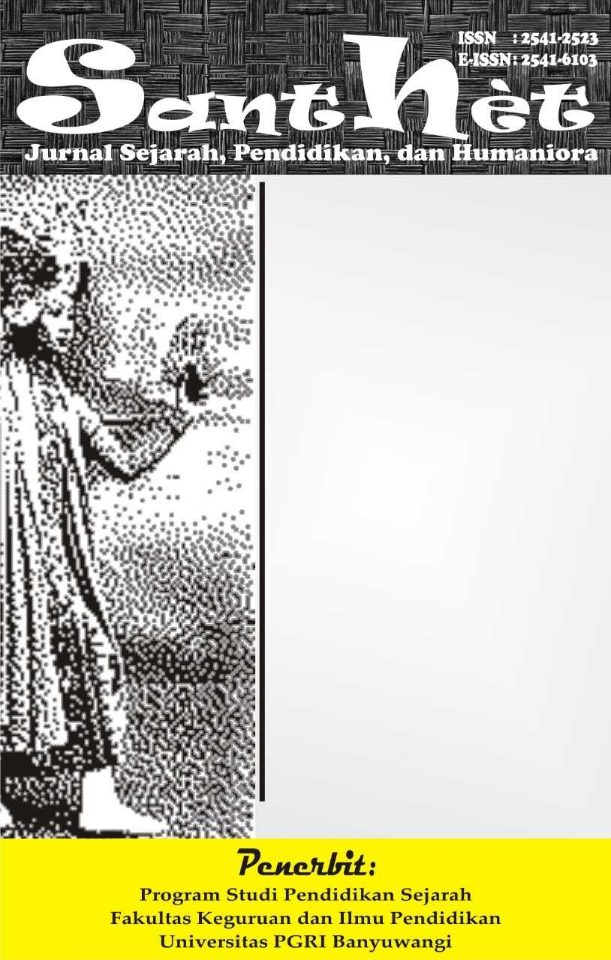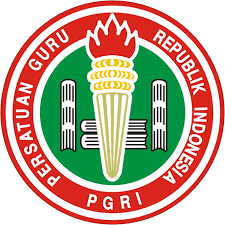The Effect Of E-service quality, E-trust, and Price on Customer E-Loyalty mediated by Customer E-Satisfaction on Gen Z user of Lazada Application in Padang City
Pengaruh E-service quality , E-trust Dan Price Terhadap Customer E-Loyalty Yang Dimediasi Oleh Customer E-Statisfaction Pada Gen Z Pengguna Aplikasi Lazada di Kota Padang
DOI:
https://doi.org/10.36526/santhet.v9i1.5032Keywords:
E-service quality, Price, E-trust, E-Loyalty, E-Satisfaction.Abstract
This research was conducted with the aim of analyzing how electronic service quality, electronic trust, price influence customer loyalty, with customer satisfaction as a mediator in the Lazada application. The subjects of this research are Gen Z in Padang City. The sampling technique uses purposive sampling. The number of samples used was 180 respondents. Data was collected through a questionnaire with a Likert scale, then analyzed using SmartPLS 4.1 software. The results of this research show that electronic service quality, electronic trust, and price have a significant effect on electronic customer satisfaction and loyalty. However, electronic trust does not have a significant effect on electronic customer loyalty. E-customer satisfaction mediates the relationship between E-service quality, E-trust, price and e-customer Loyalty.
References
Akbar, A., Tawe, A., Abadi, R. R., Aslam, A. P., & Abadi, R. R. (2022). Pengaruh E-trust dan E-Customer Satisfaction Terhadap E-Customer Loyalty Pada Pengguna Aplikasi Shopee di Kota Makassar. In Prosiding SEMINAR NASIONAL HASIL PENELITIAN. LP2M-Universitas Negeri Makassar. http://eprints.unm.ac.id/id/eprint/29015
Almanwari, H. S. A., Saad, N. H. M., & Zainal, S. R. M. (2024). The influence of environment & location, personal motivation, and fee & price on satisfaction, attituding and behavioural loyalty among international students in Oman. Journal of Open Innovation: Technology, Market, and Complexity, 100285. https://doi.org/10.1016/j.joitmc.2024.100285
Alnaim, A. F., Sobaih, A. E. E., & Elshaer, I. A. (2022). Measuring the Mediating Roles of E-trust and E-Satisfaction in the Relationship between E-service quality and E-Loyalty: A Structural Modeling Approach. Mathematics, 10(13),2328. https://doi.org/10.1108/LHT-07-2020-0165
Aprileny, I., Rochim, A., & Emarawati, J. A. Pengaruh Kualitas Pelayanan, Harga dan Kepercayaan Terhadap Loyalitas Pelanggan melalui Kepuasan Pelanggan: Studi pada Pelanggan Grab Bike SMA Islam Al-Azhar 4. Jurnal STEI Ekonomi (JEMI). 31 (02), 60-76. Doi.10.36406/jemi.v31i02.545.
Arifin. 2011. Metode Penelitian Kualitatif, Kuantitatif, dan R & D. Bandung: Alfabeta
Ashiq, R., & Hussain, A. (2024). Exploring the effects of E-service quality and E-trust on consumers'e-satisfaction and e-loyalty: insights from online shoppers in Pakistan. Journal of Electronic Business & Digital Economics, 3(2), 117-141. https://doi.org/10.1108/JEBDE-09-2023-0019
Chao, S. L., Yu, M. M., & Wei, S. Y. (2024). Ascertaining the impact of E-service quality on e-loyalty for the e-commerce platform of liner shipping companies. Transportation Research Part E: Logistics and Transportation Review, 184, 103491. https://doi.org/10.1016/j.tre.2024.103491
Chen Jin et al., “The Role of Mutual Trust in Building Members' Loyalty to a C2C Platform Provider”, International Journal of Electronic Commerce (2009): 147. https://doi.org/10.2753/JEC1086-4415140105
Chin, W. W. (1998). The Partial Least Squares Aproach to Structural Equation Modeling. Modern Methods for Business Research, 295, 336. https://doi.10.4324/9781410604385-10
Dewi, N. P. K., & Ramli, A. H. (2023). E-service quality, E-trust dan E-Customer Satisfaction Pada E-Customer Loyalty dari Penggunaan E-Wallet OVO. Jurnal Ilmiah Manajemen Kesatuan, 11(2), 321-338. https://doi.org/10.37641/jimkes.v11i2.2000
Evi, Tiolina dan Widarto Rachbini. (2022). Partial Least Squares (Teori Dan Praktek). Surakarta: Tahta Media Grub https://tahtamedia.co.id/index.php/issj/article/download/152/153/593
Fandy Tjiptono. (2019). Pemasaran Jasa-Prinsip, Penerapan, dan Penelitian (1st ed.). Andi.
Gotama, F., & Indarwati, T. A. (2019). The Effects of E-trust and E-service quality to E-Loyalty with E-Satisfaction as the Mediation Variable (The Study of Bebas Bayar Application User’s in Indonesian). Jurnal Minds: Manajemen Ide Dan Inspirasi, 6(2), 145-160. https://doi.org/10.24252/minds.v6i2.9503
Ghozali, Imam., & Latan, H. (2020). Partial Least Squares: Konsep, Teknik, dan Aplikasi Menggunakan Program SmartPLS 3.0 (2nd ed.). Badan Penerbit - Undip.
Ghozali, I. (2016) Aplikasi Analisis Multivariete Dengan Program IBM SPSS 23. Edisi 8. Semarang: Badan Penerbit Universitas Diponegoro
Griffin, J. (2016). Loyalitas Pelanggan : menumbuhkan dan mempertahankan kesetiaan pelanggan / Jill Griffin ; alih bahasa, Dwi Kartini Yahya. In J. Griffin (Ed.), Customer loyalty (15th ed., pp. xv, 238 hlm.; 23 cm.). Erlangga: Jakarta
Handayani, Dola Fitritha Raras, Retno Widowati, and Nuryakin Nuryakin. "The influence of E-service quality, trust, brand image on Shopee customer satisfaction and loyalty." Jurnal Siasat Bisnis (2021): 119-130. https://doi.org/10.20885/jsb.vol25.iss2.art3
Hair, J. F., Sarstedt, M., Hopkins, L., & Kuppelwieser, V. G. (2014). Partial least squares structural equation modeling (PLSSEM): An emerging tool in business research. European Business Review, 26(2), 106–121. https://doi.org/10.1108/EBR-10-2013-0128
Hair, J.F.et al.(2017). A Primer on Partial Least Squares Equation Modeling (PLS-SEM) Edisi Kedua. Unites States of Amerika : SAGEnPublications,Inc.
Hair, J.F. et al. (2019) When to use and how to report the results of PLS-SEM, European Business Review, 31(1), pp. 2–24. doi:10.1108/EBR-11-2018-0203.
Hair, J.F. et al. (2021) Partial Least Squares Structural Equation Modeling (PLS-SEM) Using R, Practical Assessment, Research and Evaluation. hhtps://doi.org/10.1007/978-3-030-80519-7
Jasni, W. N. F. W., Jamaluddin, M.R. & Hanafiah, M.H. (2020). Online travel agencies (OTAs) E-service quality, brand image, customer satisfaction and loyalty, Journal of Tourism, Hospitality and Culinary Arts (JTHCA), Vol. 12 No. 2, pp. 96-111.
Karim, R. A., Rabiul, M. K., & Kawser, S. (2023). Connecting e-customer relationship management and e-loyalty to willingness to recommend a bank service: the sequential mediating roles of e-satisfaction and E-service quality. Global Knowledge, Memory and Communication. https://doi.org/10.1108/GKMC-05-2023-0176
Kotler, Philip & Gary Armstrong. (2016). Prinsip-prinsip Pemasaran (ed.ke-13).Jakarta : Erlangga.
Lin, H., Lee, M., Liang, J., & Chang, H. (2019). modeling in e-learning research. 0(0), 1–19. https://doi.org/10.1111/bjet.12890
Lovelock, C, dan John Wirtz, 2011. “Pemasaran Jasa Perspektif edisi 7”. Jakarta :Erlangga.
Nadeem, W., Khani, A. H., Schultz, C. D., Adam, N. A., Attar, R. W., & Hajli, N. (2020). How social presence drives commitment and loyalty with online brand communities? the role of social commerce trust. Journal of Retailing and Consumer Services, 55, 102136. https://doi.org/10.1016/j.jretconser.2020.102136
Nalendra, A. R. A., Winarto, S. H., & Priadi, A. (2022). Pengaruh Kualitas Layanan, Harga, Promosi Terhadap Loyalitas Pelanggan Dengan Kepuasan Pelanggan Sebagai Variabel Intervening. Jurnal Ilmiah Prodi Manajemen Universitas Pamulang. Vol. 10, No. 1.
Nurdin, dan Hartati, Sri. (2019). Metodologi Penelitian sosial. Surabaya : Media Sahabat Cendikia.
Nurdin, Ismail dan Sri Hartati.2019. Metodologi Penelitian Sosial.Surabaya: Media Sahabat Cendekia..
Olaleye, B. R., Adeyeye, O. P., Efuntade, A. O., Arije, B. S., & Anifowose, O. N. (2021). E-quality services: A paradigm shift for consumer satisfaction and eloyalty; Evidence from postgraduate students in Nigeria. Management Science Letters, 11, 849–860. https://doi.org/10.5267/j.msl.2020.10.0 15
Oliver, R. L. (1999) Whence Consumer Loyalty. Journal of Marketing. 63, 33-34. https://doi.org/10.2307/1252099
Philip T. Kotler & Kevin Lane Keller. (2016). Marketing Management (Global Edition) 15th Edition (15th ed.). Pearson Global Edition.
Rama, A. (2020). Strategic pricing by Islamic banks and the impact on customer satisfaction and behavioral intention. Journal of Islamic Accounting and Business Research, 11(10), 2017-2033.
Rahmawaty, S., Kartawinata, B. R., Akbar, A., & Wijaksana, T. I. (2021). The Effect of E-service quality and E-trust on E-Customer Loyalty through ECustomer Satisfaction as An Intervening Variable (Study on Gopay Users in Bandung). Proceedings of the International Conference on Industrial Engineering and Operations Management, 7(11), 5495–5506
Rachmawati, D., & Syafarudin, A. (2022). Analysis of E-service quality and E-trust on e-Loyalty with e-Satisfaction as an Intervening Variable in The Government e-Catalogue. European Journal of Business and Management Research, 7(2), 323-329. DOI: 10.24018/ejbmr.2022.7.2.1377
Safitri, D. & Hayati, A. F. (2022) Pengaruh Harga dan Kualitas Layanan Terhadap Loyalitas Pelanggan Melalui Kepuasan Pelanggan Sebagai Variabel Intervening Jasa Online Maxim. Jurnal Ecogen. 5(1), p. 25. https://doi.org/10.24036/jmpe.v5i1.12780.
Sari, N. P., & Budiatmo, A. (2019). Pengaruh Harga dan Kualitas Pelayanan terhadap Loyalitas Pelanggan melalui Kepuasan Pelanggan sebagai Variabel Intervening (Studi pada Pelanggan Indihome PT Telekomunikasi Indonesia, Tbk. (Persero) Semarang). Jurnal Ilmu Administrasi Bisnis, 1–9. https://ejournal3.undip.ac.id/index.php/jiab/article/view/24869
Sugiyono. 2017. Metode Penelitian Kuantitatif, Kualitatif, dan R&D. Bandung: Alfabeta.
Sugiyono. 2018. Metode Penelitian Kuantitatif, Kualitatif, fan R&D. Bandung: Alfabeta.
Sugiyono (2019). Metode Penelitian Kuantitatif, Kualitatif, dan R&D. Bandung : Alphabet.
Sofyan Siregar. 2017. Metode Penelitian Kuantitatif.Jakarta: Kencana
Sujarweni, Wiratna. (2020). Metodologi Penelitian Bisnis & Ekonomi. Yogjakarta.
Syahidah, A. A., & Aransyah, M. F. (2023). Pengaruh E-service quality dan E-trust Terhadap E-Customer Loyalty Pada Pengguna Dompet Digital DANA Melalui E-Satisfaction Sebagai Variabel Intervening. Jurnal Sisfokom (Sistem Informasi dan Komputer), 12 (1),36-44. https://doi.org/10.32736/sisfokom.v12i1.1593
Tjiptono. Fandy & Diana. Anastasia. 2019. Kepuasaan Pelanggan-Konsep,Pengukuran, dan Strategi. Yogyakarta : ANDI. ISBN 978 – 623 – 01 –0194 – 6.
Umah, Umdatul, and Alshaf Pebrianggara. "The Effect of E-service quality, E-trust and E-WOM on E-Customer Loyalty at Lazada Marketplace in Sidoarjo: Pengaruh E-service quality, E-trust dan E-WOM terhadap E-Customer Loyalty pada Marketplace Lazada di Sidoarjo." https://orcid.org/0000-0003-3072-7561
Wilis, R., & Nurwulandari, A. (2020). The effect of E-service quality, E-trust, Price and Brand Image Towards E-Satisfaction and Its Impact on E-Loyalty of Traveloka’s Customer. Jurnal Ilmiah Manajemen, Ekonomi, & Akuntansi (MEA), 4(3), 1061-1099. https://doi.org/10.31955/mea.v4i3.609





























